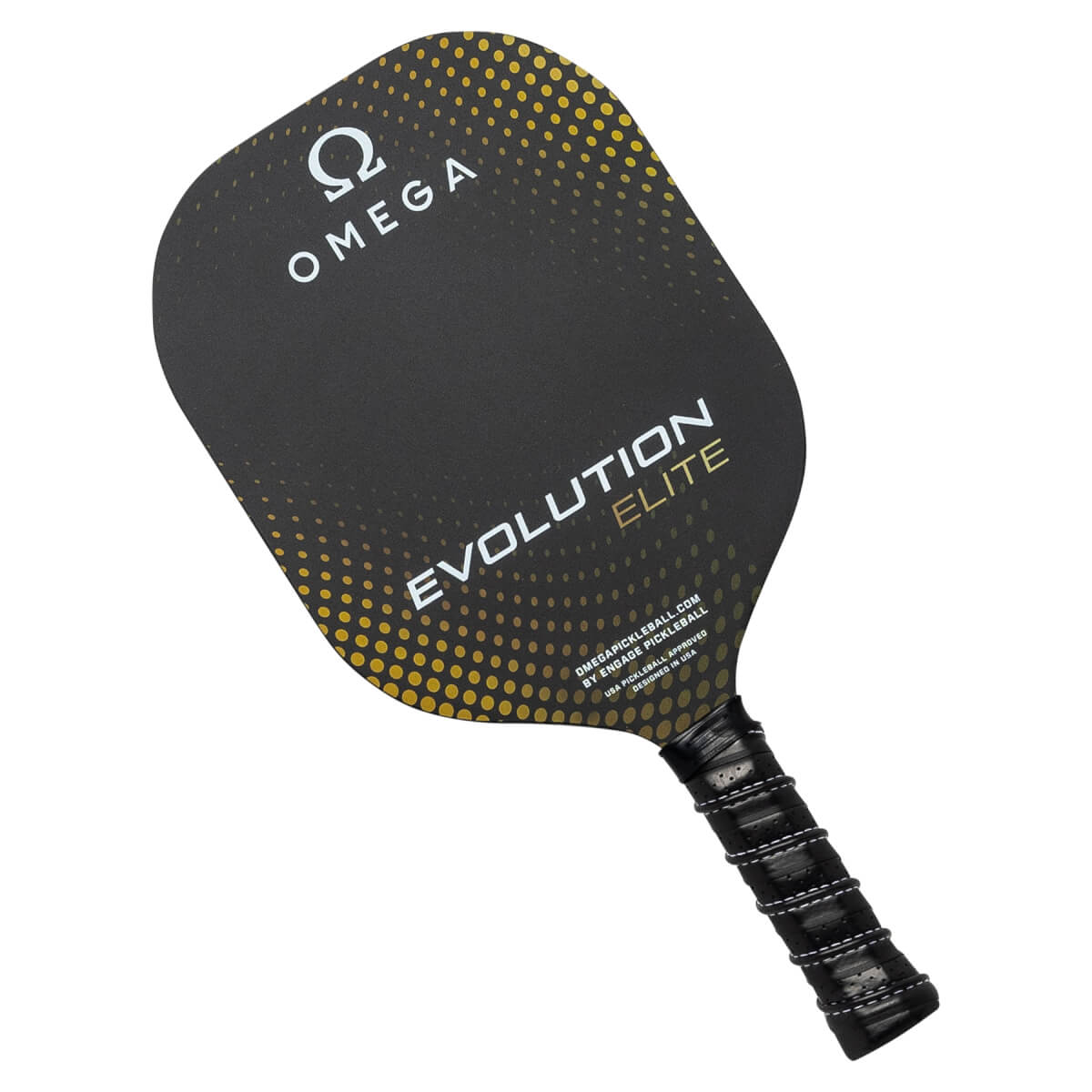Edgeless pickleball paddles tend to have bigger sweet spots and are more responsive throughout the paddle. They offer increased playing surface area on the face of the paddle, making them a popular choice among top players.
What Are Edgeless Pickleball Paddles?
Definition And Explanation Of Edgeless Pickleball Paddles
An edgeless pickleball paddle refers to a paddle design that lacks the traditional edge guard typically found on pickleball paddles. Instead of a protective edge, an edgeless paddle has a smooth, continuous surface from the face to the edge of the paddle. This unique design brings about several advantages and changes the game dynamics for players.
Brief History And Background Of Edgeless Paddle Design
The concept of edgeless pickleball paddles originated from the desire to maximize the playing surface area of the paddle without sacrificing control and performance. By eliminating the traditional edge guard, manufacturers were able to create paddles with a larger sweet spot and a more responsive surface throughout.
Initially, the use of edgeless paddles was popular among professional players and advanced enthusiasts who were seeking every advantage on the court. However, as the benefits of the design became more apparent, edgeless paddles started gaining popularity among recreational players as well.
Over time, manufacturers recognized the demand for edgeless paddles and began creating a wide range of options to cater to different playing styles and preferences. Today, you can find edgeless pickleball paddles made from various materials, with different weights, and featuring different core technologies, allowing players to choose the paddle that best suits their needs.
Overall, edgeless paddles have revolutionized the game of pickleball by offering players a larger sweet spot, improved control, and enhanced responsiveness. Whether you’re a beginner or a seasoned professional, an edgeless pickleball paddle can be a valuable asset to elevate your game.
Benefits Of Edgeless Pickleball Paddles
Increased Surface Area And Larger Sweet Spot
One of the significant benefits of edgeless pickleball paddles is the increased surface area and larger sweet spot they offer. Traditional paddles have an edge or guard that reduces the usable surface area. However, with an edgeless paddle, players can make use of the entire face for shots and enjoy a larger sweet spot. This means better shot placement and increased ball control, leading to more powerful and accurate shots.
Enhanced Ball Control And Shot Accuracy
Edgeless pickleball paddles also provide enhanced ball control and shot accuracy. With a larger surface area, players have more control over the paddle and can accurately strike the ball with precision. The absence of an edge or guard eliminates any interference during shots, allowing for a smooth and consistent contact with the ball. This increased control and accuracy can significantly improve your overall performance on the court.
Reduced Risk Of Mis-hits And Paddle Edge Interference
Another key advantage of edgeless pickleball paddles is the reduced risk of mis-hits and paddle edge interference. The absence of an edge or guard eliminates any chance of the ball hitting the paddle’s edge, resulting in cleaner shots and reduced mishits. This ensures that every shot you make is clean, minimizing the chances of errors and unnecessary interference from the paddle’s edge. With an edgeless paddle, you can play with confidence, knowing that your shots will be more consistent and accurate.
Comparing Edgeless And Traditional Pickleball Paddles
Key Differences In Design And Construction
When it comes to pickleball paddles, one of the key differences players often encounter is the design and construction of edgeless and traditional paddles. Traditional pickleball paddles have a distinct edge, while edgeless paddles, as the name suggests, eliminate the presence of a defined edge.
This design variation directly impacts the overall feel and playability of the paddle. Edgeless paddles tend to have a larger sweet spot and a more responsive surface throughout the paddle. The absence of a pronounced edge allows for a smoother, uninterrupted surface, providing players with a consistent bounce and enhanced control during gameplay.
In contrast, traditional paddles typically have a more rigid frame due to the presence of the edge. While some players may prefer the stability and stiffness of a traditional paddle, others may find it limiting in terms of maneuverability and shot variation.
Performance Variations Between Edgeless And Traditional Paddles
The design and construction differences between edgeless and traditional pickleball paddles directly impact their performance on the court. Edgeless paddles, with their larger sweet spot and responsive surface, tend to offer players greater power, accuracy, and control.
The absence of an edge allows for a more forgiving hitting surface, reducing the chances of mis-hits and providing a more consistent paddle response. This can be especially beneficial for beginner and intermediate players looking to improve their shots and build confidence in their gameplay.
On the other hand, traditional paddles, with their rigid frames and defined edges, may provide more power to players who prefer a harder-hitting style. The edge can help generate extra spin and control for advanced players, allowing them to execute precise shots and add more complexity to their game.
Impact On Gameplay And Player Experience
The choice between edgeless and traditional pickleball paddles can have a significant impact on gameplay and player experience. Each paddle type offers its own advantages and disadvantages, and the decision ultimately comes down to personal preference and playing style.
For players seeking a paddle that provides a larger sweet spot, enhanced control, and a more forgiving hitting surface, edgeless paddles may be the better choice. The absence of an edge allows for a smoother and more responsive gameplay experience, particularly for players who prioritize accuracy and consistency.
Traditional paddles, with their defined edges, can offer players who prefer power and spin a more specialized playing experience. The solid construction and rigidity of these paddles provide stability and control, enabling advanced players to execute precise shots and take their gameplay to the next level.
Ultimately, the decision between an edgeless or traditional paddle boils down to personal preference and individual playing style. Trying out both types of paddles and considering factors such as power, control, maneuverability, and shot variation can help players determine which paddle type best suits their needs on the court.
Factors To Consider When Choosing A Pickleball Paddle
When it comes to pickleball, choosing the right paddle is crucial for your performance on the court. There are several important factors to consider when selecting a pickleball paddle that suits your playing style and preferences. In this article, we will discuss some key factors that you should keep in mind when making your decision.
Weight And Maneuverability
The weight of a pickleball paddle plays a significant role in how it feels in your hands and how you can maneuver it during gameplay. Lightweight paddles are generally easier to control and allow for quicker reactions, making them a popular choice among players who prioritize speed and agility. On the other hand, heavier paddles offer more power and stability, making them ideal for players who prefer a more aggressive playstyle. It’s important to find the right balance between weight and maneuverability that suits your playing style.
Paddle Core Materials And Technologies
The paddle core is the inner part of the paddle that contributes to its responsiveness and feel. There are three main types of core materials used in pickleball paddles: polymer (including polypropylene and aluminum honeycomb), Nomex, and aluminum. Polymer cores are known for providing a soft feel and enhanced ball control, while Nomex cores offer a firmer feel and increased power. Aluminum cores are durable and deliver excellent power, but they can be less forgiving on mishits. Consider your playing style and preference when choosing the right paddle core material.
Paddle Surface Texture And Grip
The surface texture of a pickleball paddle affects the amount of spin you can generate on the ball. Paddles with a rougher surface texture tend to provide more grip and spin potential, while smoother surfaces offer less spin but can provide additional control. It’s important to find a surface texture that suits your style of play and allows you to execute the shots you desire. Additionally, the grip of the paddle is crucial for comfort and control. Paddle grips come in various materials, such as cushioned or perforated grips, and different sizes to accommodate different hand sizes. Be sure to choose a paddle with a grip that feels comfortable and secure in your hands.
Thickness And Stiffness Of The Paddle Face
The thickness and stiffness of the paddle face can impact the power, control, and sweet spot size of the paddle. Thicker faces tend to provide more power, while thinner faces offer enhanced control. Stiff faces deliver excellent power and stability but can be less forgiving on off-center hits. Consider your playing style and preference when deciding on the thickness and stiffness of the paddle face that suits you best.
Handle Size And Length
The size and length of the handle are essential for comfort and control. Handles come in various sizes, including small, medium, and large, to accommodate different hand sizes. Additionally, the length of the handle can also affect the overall balance and feel of the paddle. It’s important to choose a handle size and length that feels comfortable and allows you to maintain a proper grip throughout your gameplay.

Credit: www.amazon.com
Frequently Asked Questions Of Are Edgeless Pickleball Paddles Better
Is There Really A Difference Between Pickleball Paddles?
Yes, there is a difference between pickleball paddles. The differences include weight, core, surface, thickness, grip size, and handle length. These factors affect playability. Edgeless paddles have bigger sweet spots and are more responsive, but may have a smaller sweet spot.
Ultimately, the choice comes down to personal preference.
What’s A Better Pickleball Paddle?
Edgeless pickleball paddles tend to have bigger sweet spots and are more responsive throughout the entire paddle. However, they may have a smaller sweet spot and less stability for off-center hits. Ultimately, it depends on your playing style and preferences.
What Is The Difference Between 14 And 16 Joola?
The difference between a 14 and 16 Joola paddle is the length. The 14 paddle is shorter while the 16 paddle is longer.
What Does The Thickness Of A Pickleball Paddle Mean?
The thickness of a pickleball paddle refers to the width or depth of the paddle. It can affect the playability and responsiveness of the paddle.
Conclusion
Edgeless pickleball paddles offer several advantages for players. These paddles have bigger sweet spots and provide a more responsive playing experience. The lack of edges also makes them more aerodynamic, allowing for faster reaction times. While some argue that edgeless designs have smaller sweet spots, the benefits of increased playing surface area and ease of maneuverability outweigh any potential drawbacks.
Ultimately, the choice between edgeless and edged paddles depends on individual preferences and playing style. Consider trying edgeless paddles to elevate your pickleball game.

